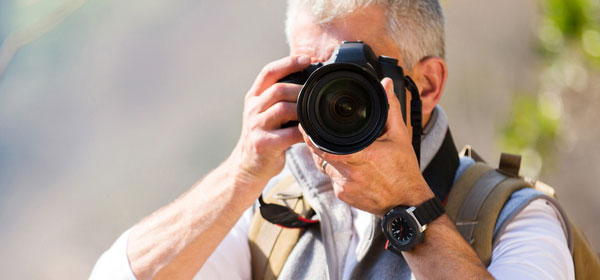Have you ever stopped and thought about why you take photos when you travel? Of course, it’s nice to capture new sights rather than rely on your photographic memory alone, but it’s unlikely you’ll end up getting your images printed and put in an album. Instead, most of us end up blindly taking hundreds of snaps, of which a select few may make it to social media, only for the rest to end up sitting forgotten on phones, tablets and cameras worldwide. It’s almost as though we take photos because we feel we ‘should’.
The good news, however, is there is an easy way you can make your photos work for you and earn you some extra dollars. You may have heard of sites such as iStock and Shutterstock. Known as Microstock photo libraries, they are often used by websites and publishing companies to acquire photos they can legally use for their content. With clients paying for the privilege of using the photos, Microsites offer an opportunity for you to upload your travel pictures for free and then make a cut on the profits each time they are downloaded.
10 steps to taking photos that sell:
1. Know your subject: make sure your picture has a distinctive subject and that the background doesn’t distract or detract.
2. Get some scale: landscape photos can get ‘lost’ and lose meaning without an object to provide scale. Whether it’s a tree, car, boat or animal, make sure something in the frame gives a scene of scale.
3. Create contrast: images with bright colours help to grab attention and stand out more than those with muted or neutral tones.
4. Timing is everything: the best time of day to take photos is early morning and dusk when the lighting is softer. Don’t be afraid to play around with different weather conditions either – sadly, life isn’t always sunny!
5. Work your angles: there’s nothing wrong with taking a photo of a famous monument or tourist attraction but make sure you come at it from a different angle. This will help it to stand out among all the other photos of the same point of interest.
6. Get your resolution right: Microstock photo libraries only want high-res images, so make sure the ones you are taking are larger than four megapixels. Megapixels refer to the tiny spots of colour in the image, not the size of the file (megabytes).
7. Avoid strangers: while good shots of people (read not selfies of you and your partner) are of high value, they come with the requirement of an appropriate model-release form. A quick Google search can help with securing said form; however, getting it signed by strangers is easier said than done. Stick to willing and known human beings to avoid breaking any laws.
8. Avoid at all costs: images featuring nudity will be blocked by filters and any commercial logos often come with the complication of copyright issues.
9. Stay focused: blurry images are unlikely to be considered ‘artistic’. Make sure your photos are crystal clear and in focus.
10. Everyone loves animals: arguably more than people! Images of animals in their natural habitats are more likely to be popular.
Five Microstock sites to sell your shots:
Shutterstock – used in 150 countries, the site has over 38 million images. The volume of traffic increases your chance of selling your images.
iStock – owned by Getty Images, the original source for user-generated stock photos, while traffic is higher the cut is likely to be lower than some smaller platforms.
DepositPhotos – the mobile app allows you to quickly sell photos you’ve taken on your phone for a cut of approximately 44 per cent.
SmugMug Pro – the Pro subscription option gives you the tools to make your images look good and sell them while keeping 85 per cent of the cut.
500px Prime – with 70 per cent of sales going to the photographer, this site is a great option for selling premium royalty-free stock photos.
Finally, because a picture is worth 1000 words, give your image the best chance of being found by the relevant buyers by tagging it correctly. When uploading your image to Microstock libraries include keywords that cover the subject matter, setting, location, time of day and orientation (and whether or not the photo is portrait or landscape).
A great way to maximise all your hard work taking photos. Just think where the extra cash could take you! Who knows, perhaps you’ll even see your photo on the YourLifeChoices website one day!

